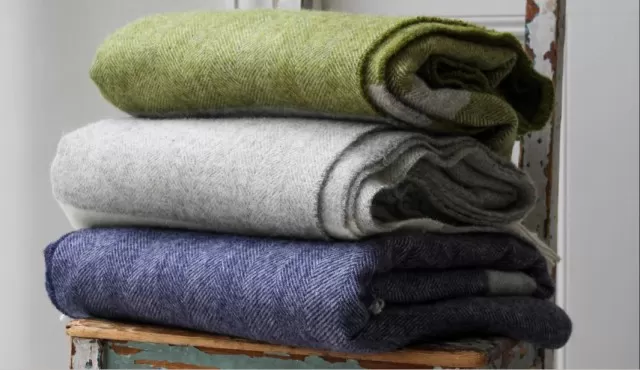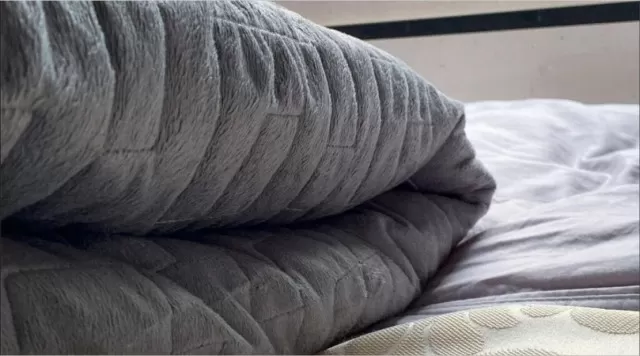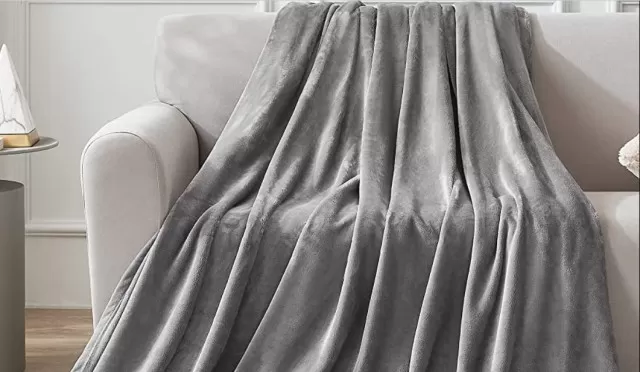I hate to be the bearer of bad news, but that comfortable throw blanket you’ve been cuddling with on Your Couch is likely very dirty.
Cleaning Faux-fur Blankets

Cleaning faux-fur blankets, typically made of synthetic fibers like acrylic and polyester, is generally straightforward compared to delicate fur blankets.
Before proceeding, check the care tag on your faux-fur blanket. While some recommend dry cleaning only, many faux-fur blankets can be safely washed at home using the following method:
Place the blanket in your washing machine and select a cold, delicate cycle.
If a gentle option is not available, use the lowest spin setting. Use your regular detergent without chlorine bleach and skip fabric softeners.
After washing, air-dry the blanket by hanging it on a rack or clothesline. Avoid using a dryer.
Once dry, give the blanket a good shake to fluff up the faux fur. If the faux fur appears matted, use a pet slicker brush or a wide-tooth comb to brush the blanket in all directions.
Avoid using an iron. By following these steps, you can effectively clean your faux-fur blanket, maintaining its appearance and keeping it cozy and inviting.
Washing an electric blanket

Washing an electric blanket may seem risky, but many heated throws are designed to be machine washable.
Before starting, ensure the blanket is unplugged and disconnect all cords and controls. Follow these steps:
Use cool water and detergent to wash the electric blanket.
Avoid bleach and fabric softeners as they can harm the fibers. Select the gentlest cycle available to minimize stress on the wiring inside the blanket.
Let the machine agitate for 2-3 minutes. Skip to the rinse cycle and promptly remove the blanket once the cycle is complete.
For drying the electric blanket:
Carefully reshape the blanket to its original form.
Air drying: Drape the blanket over a clothesline or shower rod to allow it to dry naturally. Machine drying: If suitable for machine drying, use a low- or no-heat setting in the dryer.
After approximately 10 minutes, remove the blanket from the dryer and hang it up to complete the drying process. Ensure the electric blanket is completely dry before plugging it in and using it again.
By following these instructions, you can safely wash and dry your electric blanket, maintaining its functionality and prolonging its lifespan.
Wash a Wool Blanket

Washing a wool blanket should be done sparingly since wool naturally repels dirt and stains.
Between washes, you can freshen up a wool blanket by shaking it out and using a soft-bristled fabric brush to remove any dirt or debris. Brush the blanket in the same direction to avoid damaging the fibers.
Before washing a wool blanket, always check the manufacturer’s care instructions to ensure it can be machine-washed and is not designated as dry-clean only.
If it’s safe for machine washing, use cold water and a detergent specifically formulated for wool. Start by placing the blanket in the machine and allowing it to soak in the water and detergent solution for approximately 15 minutes.
Then, select a gentle cycle and let it run for about two minutes before moving to the rinse cycle. After washing, hang the wool blanket to dry in an area away from direct sunlight to prevent color fading.
If needed, you can roll the blanket in a towel and gently squeeze it to remove excess moisture, but avoid wringing it out. It’s best to avoid using a dryer for wool blankets, as this can damage the delicate fibers, causing shrinkage or a rough texture.
By following these guidelines, you can properly wash your wool blanket while preserving its quality and ensuring it stays soft and cozy.
Wash a Weighted Blanket

The method for washing a weighted blanket will vary depending on its fabric and filler.
If your blanket is filled with glass microbeads or plastic pellets, it is likely safe for machine washing, but always refer to the manufacturer’s instructions for specific guidelines.
For blankets weighing up to 20 pounds, you can typically wash them in your household washing machine.
Use a gentle cycle with cold water and a mild detergent. Avoid bleach, as it can damage the fibers, and fabric softeners, as they can create a buildup that affects the blanket’s texture.
If there are small stains that don’t require a full wash, you can spot-clean the weighted blanket using a solution of warm water and laundry detergent.
Alternatively, consider using a duvet cover that can be easily removed and washed separately when needed.
When drying the weighted blanket, you can either place it in the dryer on a low-heat cycle or spread it out on a clean, dry surface or the edge of a bathtub to air dry.
Ensure that the blanket hangs evenly during drying to maintain its shape. If your weighted blanket exceeds 20 pounds, it’s recommended to take it to a laundromat.
Commercial-sized washing machines are better equipped to handle heavier blankets.
Wash a Fleece Blanket

When it comes to washing fleece blankets (including faux fur and microfiber throws), maintaining their softness can be a bit challenging.
To prevent pilling or matting, it’s important to wash fleece blankets separately in cold water using a gentle cycle. Using a small amount of detergent is sufficient, as adding more soap won’t necessarily make the blanket cleaner.
Excess detergent can cling to the fleece fibers and make the blanket feel less soft.
Avoid using bleach, as it can damage the fibers and affect the blanket’s color.
Polyester fleece is naturally resistant to stains, so a cold water wash with detergent should effectively clean the blanket. For stubborn stains, you can pre-treat them by applying a small drop of dishwashing liquid, allowing it to sit on the spot for about 10 minutes, and then blot it away with a paper towel or cloth.
After washing, hang the fleece blanket to line-dry or use a low- or no-heat cycle in the dryer. Avoid drying the fleece blanket on high heat, as it can cause the fibers to melt or shrink.
*The information is for reference only.